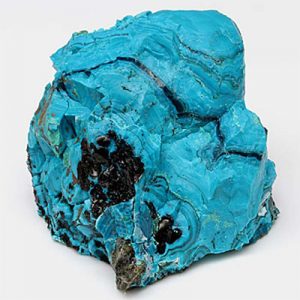Chrysocolla
Chrysocolla is just a mineral of additional origin, commonly associated with other copper that is additional. It really is typically found as glassy botryoidal or masses which can be rounded bubbly crusts and as jackstraw mats of tiny acicular crystals or tufts of fibrous crystals. The name Chrysocolla was first used by Theophrastus in 315 BC and comes from the Greek chrysos, meaning gold, and kolla, meaning glue, in allusion to the name of the material utilized to solder gold.
Chrysocolla is frequently found as being a gel combined with Quartz or is “agatized” in chalcedony quartz. Pure Chrysocolla is extremely fragile and soft and not suitable for faceted gems or cabochons. Agatized Chrysocolla however, is hard (Mohs hardness of about 7) and able and durable to be polished as cabochons often containing really attractive mixtures of Chrysocolla, Azurite and Malachite. Agatized Chrysocolla is sufficient that is rarely translucent faceting but makes for beautiful gems by having a unique color in the gem world.
Chrysocolla can be found in a few locations global. Some of the better locations that are understood Nizhni Tagil, Ural Mountains, Russia; the Timna (King Solomon’s) mine, Israel; the celebrity of the Congo mine, Lubumbashi, and at Likasi and Kakanda, Katanga Province, Congo (Shaba Province, Zaire); Cananea, Sonora, Mexico; Chuquicamata and Exotica deposits; around Copiapo and Coquimbo, Chile; Chillagoe district, Queensland, Australia. In America, in Arizona, Globe-Miami region, Gila County, Morenci, Greenlee County, San Manuel and Ray mines, Pinal County; in New Mexico, at Santa Rita, Grant County; from Utah, in the Tintic district, Juab County.
| Category: | Phyllosilicate mineral |
| Chemical Formula: | (Cu;Al)2H2Si2O5(OH)4 • nH2O Category |
| Hydrated Copper Aluminum Silicate Hydroxide | |
| Molecular Weight: | 328.42 gm |
| Composition: | Aluminum | 2.05 % | Al | 3.88 % | Al2O3 |
| Copper | 33.86 % | Cu | 42.39 % | CuO | |
| Silicon | 17.10 % | Si | 36.59 % | SiO2 | |
| Hydrogen | 1.92 % | H | 17.14 % | H2O | |
| Oxygen | 45.06 % | O | |||
| 100.00 % | 100.00 % | = TOTAL OXIDE |
| Crystallography: | Orthorhombic |
| Crystal Habit: | Crystals acicular, to 5 mm, in radiating clusters; fine fibrous, botryoidal, earthy; commonly cryptocrystalline, opaline, or enamel-like. |
| Twinning: | None reported. |
| Cleavage: | None |
| Fracture: | Conchoidal, Irregular/Uneven |
| Tenacity: | Brittle to somewhat sectile |
| Moh’s Hardness: | 2.5 – 3.5 |
| Density: | 1.93 – 2.40 (g/cm3) |
| Luminescence: | None |
| Radioactivity: | Not Radioactive |
| Color: | Green, bluish green, blue, blackish blue, or brown |
| Transparency: | Translucent to Opaque |
| Luster: | Vitreous, Porcelaneous, Waxy, Earthy, Dull |
| Refractive Index: | 1.460 – 1.57 Uniaxial ( + ) |
| Birefringence: | 0.110 |
| Dispersion: | Weak |
| Pleochroism: | Weak; e = colorless, w = pale blue green |


